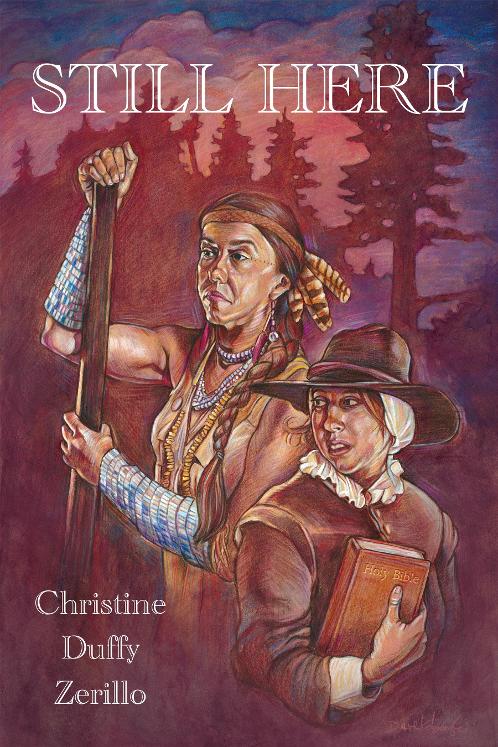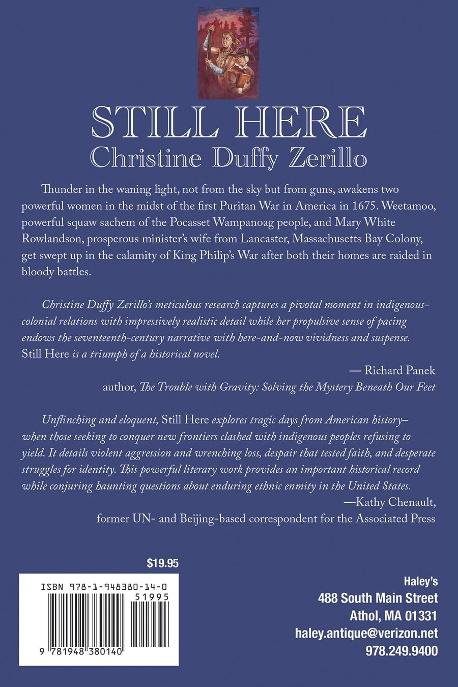The link below will take you to another link that says the owner of the website has disabled watching on any other website, but the same click away has a line that says "Watch on YouTube." If you click to watch on YouTube, you will see the video, From Freedom to Flight.
The novel Still Here in part considers material from the captivity narrative of Mary Rowlandson, taken from her home in Lancaster, Massachusetts, during King Philip’s War in 1675-1676. She lived for eleven weeks as a captive to the second most powerful native sachem or chief, Weetamoo of the Pocasset Wampanoag tribe, who then lived near present day Little Compton, Rhode Island. Against the backdrop of one of the bloodiest wars in history, I portray the relationship between the two women and their physical, emotional, and spiritual journeys.
Redemption Rock
The granite ledge known as Redemption Rock in Princeton, Massachusetts, is the site of the famous release from captivity of Mary White Rowlandson. On its perpendicular face is inscribed: “Upon this rock May 2nd 1676 was made the agreement for the ransom of Mrs. Mary Rowlandson of Lancaster between the Indians and John Hoar of Concord. King Philip was with the Indians but refused his consent.”
Mary White Rowlandson (1637-1711) told her own story in The Narrative of the Captivity and Restoration of Mrs. Mary Rowlandson, which first appeared in public in 1679, three years after her capture and release. It would become a seventeenth-century bestseller on both sides of the Atlantic with fifteen editions published before 1800. According to Neal Salisbury, who re-published Mary’s narrative in 1997 as The Sovereignty and Goodness of God in 1653, Lancaster was a frontier town in the “wild, wild west” of Massachusetts. The Rock southeast of Wachusett Lake was a point of contact between two civilizations.
Many of New England’s Native American tribes, angered by the spread of colonial settlements, the conversion of forests into farmland, and perceived injustices at the hands of colonists, joined the Wampanoag sachem Metacom (called Philip by the English) in an attempt to drive the colonists from their new homelands, in the process destroying hunting grounds, winter camps, and settlements. Mary White Rowlandson’s narrative begins on February 10, 1676, when four hundred Nipmucs, Narragansetts, and Wampanoags attacked Lancaster “about sun-rising.” Mary, her three children, and twenty other captives were taken into “the vast and desolate wilderness, I knew not whither.” After many “removes” (shifts of locations), they ultimately rendezvoused with King Philip near the present-day New Hampshire-Vermont border north of Northfield, Massachusetts. Her bible was a source of comfort throughout, and her sewing skills, quickly discovered, placed her in good favor; for a shilling, she was asked to make a shirt for King Philip.
Mary and her captors returned by late April, 1676. John Hoar of Concord, who had instructed and protected a group of “praying Indians,” went to negotiate her release at the flat-topped outcrop overlooking a meadow where the Native Americans had camped. She writes, “Philip who was in the company came up and took me by the hand and said, ‘Two weeks more and you shall be Mistress again.’” Later, a ransom was raised “by some Boston gentlemen.” She traveled to Boston with John Hoar to be reunited with her husband, son, and eldest daughter (the youngest had died from wounds eight days after the raid).
—The Trustees of the Reservations
Redemption Rock
Princeton, Massachusetts, 2019

cover illustration by Dave Kobrenski •davekobrenski.com
